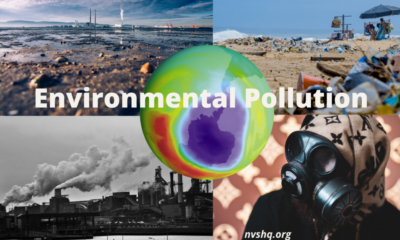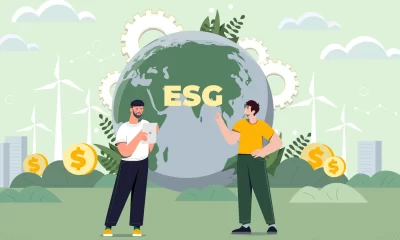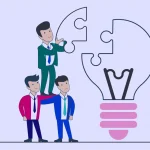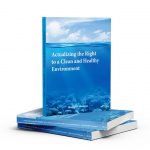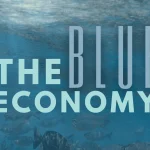By Dr. Kariuki Muigua, PhD (Leading Environmental Law Scholar, Policy Advisor, Natural Resources Lawyer and Dispute Resolution Expert from Kenya), Winner of Kenya’s ADR Practitioner of the Year 2021, ADR Publication of the Year 2021 and CIArb (Kenya) Lifetime Achievement Award 2021*
Water is now considered a human right issue and there is an increasing need to balance all of the competing commercial demands on water resources so that communities have enough for their needs. The State obligation to fulfil its human rights obligations includes the obligations to facilitate and promote the fulfilment of the right to water. The obligation to facilitate requires the State to take specific measures within its available resources to assist individuals and communities to enjoy the right to water. The obligation to promote requests the State to take targeted steps. To this end, the State can take the following measures towards the fulfillment of water as a socioeconomic right for the people of Kenya.
Public Participation and Consultation in Decision-Making
Principle No. 2 of the Dublin Statement on Water and Sustainable Development’ (1992) recommends that water development and management should be based on a participatory approach, involving users, planners and policy-makers at all levels. It goes on to state that ‘the participatory approach involves raising awareness of the importance of water among policymakers and the general public. It means that decisions are taken at the lowest appropriate level, with full public consultation and involvement of users in the planning and implementation of water projects.’ There is a need for the Government and other stakeholders to involve communities in decision-making processes relating to water management not only as a way of ensuring that the constitutional thresholds are met but also as a way of ensuring that the appreciate the challenges that face the sector and use the available water efficiently.
Addressing Poverty for Fulfilling the Right to Water
In a Resolution on the Right to Development adopted on 19 December 2016, the United Nations General Assembly expressed their concern that the majority of indigenous peoples in the world live in conditions of poverty, and recognized the critical need to address the negative impact of poverty and inequity on indigenous peoples by ensuring their full and effective inclusion in development and poverty eradication programmes. Considering that there is continued privatization and commercialization of provision of water services in the country, there is a need to address poverty levels in the country in order to ensure that people are economically empowered to afford safe, clean and adequate amounts of water for their own use.
Addressing Gender Inequality in Water Services
It has rightly been argued that since women have an increased need for water for hydration, sanitation and hygiene during menstruation, pregnancy, the postnatal period and while caring for sick family members or young children, when these basic needs are not met, women and girls are unable to participate equally in society. This is especially more pronounced in Kenya and Africa where gender roles in society are still greatly affected by cultural beliefs. As modernity and campaigns towards promotion of gender equality continue to address these cultural notions, there is a need for the government and water providers to ensure that women and girls have access to adequate and safe water for domestic and agricultural use for as long as they still bear the burden of being caregivers and nurturing families.
While the 2010 Constitution of Kenya acknowledges access to clean and safe water as a basic human right falling under social economic rights and assigns the responsibility for water supply and sanitation service provision to county governments, for a huge population of the Kenyan people, this remains a mirage. As things currently stand, water was commercialized as evidenced under the current water laws in Kenya and water has continually become expensive and women and girls’ access to the same is further hindered by their reduced purchasing power, especially in the urban informal settlements.
It is estimated that only about 20% of the population in Kenya’s urban informal settlements have access to safe drinking water. While in the major restructuring of Kenya’s urban water delivery system towards commercialization and privatization where private vendors are being regularized for better service delivery in terms of regulation of prices and quality of water, women and the urban poor continue to be disadvantaged. There is thus a need for continued empowerment of women and girls as a way of ensuring that they are economically, socially and politically empowered in order for them to have not only a say in water management decisions but also have the economic means to access the same.
Combating Climate Change for Safeguarding Water Resources
Considering that climate change poses a great threat to water sources and supply, there is a need for the stakeholders in water sector to work closely with other stakeholders in order to combat climate change through such means as sound management policies for water, using climate resilient technologies, among other means. Some authors have also argued that since water and sanitation services contribute to greenhouse gas emissions, choice of wastewater treatment technologies, improved pumping efficiency, use of renewable sources of energy, and within system generation of energy also offer potential for reducing emissions.
Financing of Water Projects
Under the Water Act 2016, there is also established a water sector financing institution to be known as the Water Sector Trust Fund.58 The object of the Fund is to provide conditional and unconditional grants to counties, in addition to the Equalisation Fund and to assist in financing the development and management of water services in marginalized areas or any area which is considered by the Board of Trustees to be underserved including- community level initiatives for the sustainable management of water resources; development of water services in rural areas considered not to be commercially viable for provision of water services by licensees; development of water services in the under-served poor urban areas; and research activities in the area of water resources management and water services, sewerage and sanitation.59 This fund should be utilized towards ensuring that all persons get to enjoy the right to clean, safe and adequate amounts of water as a socio-economic right. The fund should be used to improve water supply for both urban and rural populations.
A Human Rights Approach to Water Services Provision
It has been argued that the human right to water implies that water supply must be accessible within, or in the immediate vicinity of, each household, educational institution, workplace and public place. The right to water is now seen as an implicit component of the right to an adequate standard of living and the right to health. In the case of Isaac Kipyego Cherop v State Ministry of Water & 142 others [2017] eKLR, the Court affirmed that the right to clean water is intertwined with the right to clean and healthy environment. The right to water and sanitation is now anchored in international human rights law and states, policymakers, international development partners and civil society groups are enjoined to work om making the right to drinking water and sanitation a reality.
While it is acknowledged that the fulfilment of the right to water as a socio-economic right is progressive, the Government should continually work with non-state actors, private investors, NGOs and other stakeholders to ensure that the same is fulfilled for Kenyan citizens and especially the most vulnerable and marginalized groups. The Government should continually work towards coming up with ways of ensuring that water is affordable for all. However, considering that water is a scarce commodity, there is also need for public education and creating awareness on the need to use water efficiently in order to minimize wastage of the same. Water is an integral part of the socio-economic rights and the Government cannot ably fulfill its obligations on Article 43 of the Constitution of Kenya without working towards fulfilling its obligations on provision of water for all citizens. Fulfilling the right to water as a prerequisite for realization of other socio-economic rights for the people of Kenya is indeed necessary and possible.
*This is article is an extract from an article by Dr. Kariuki Muigua, PhD, Kenya’s ADR Practitioner of the Year 2021 (Nairobi Legal Awards), ADR Publisher of the Year 2021 and ADR Lifetime Achievement Award 2021 (CIArb Kenya): Muigua, K., Fulfilling the Right to Water as a Socioeconomic Right for the People of Kenya, https://kmco.co.ke /wp-content/ uploads/2020/11/Fulfilling-the-Right-to-Water-as-a-Socioeconomic-Right-for-the-People-of-Kenya-Kariuki-Muigua-Ph-D.pdf. Dr. Kariuki Muigua is Kenya’s foremost Environmental Law and Natural Resources Lawyer and Scholar, Sustainable Development Advocate and Conflict Management Expert. Dr. Kariuki Muigua is a Senior Lecturer of Environmental Law and Dispute resolution at the University of Nairobi School of Law and The Center for Advanced Studies in Environmental Law and Policy (CASELAP). He has published numerous books and articles on Environmental Law, Environmental Justice Conflict Management, Alternative Dispute Resolution and Sustainable Development. Dr. Muigua is also a Chartered Arbitrator, an Accredited Mediator, the Africa Trustee of the Chartered Institute of Arbitrators and the Managing Partner of Kariuki Muigua & Co. Advocates. Dr. Muigua is recognized as one of the leading lawyers and dispute resolution experts by the Chambers Global Guide 2021.
References
Albuquerque, C., “Climate Change and the Human Rights to Water and Sanitation.” (2010)< https://www2.ohchr.org/ english/issues/water/iexpert/docs/ClimateChange _HRtWS.pdf> (Accessed 11 December 2021).
CESR, ‘What Are Economic, Social and Cultural Rights?’ (3 December 2008), Available at: https://www.cesr.org/what-are-economic-social-and-cultural-rights (Accessed 29 October 2020).
Centre on Housing Rights and Evictions and others (eds), Manual on the Right to Water and Sanitation: A Tool to Assist Policy Makers and Practitioners Develop Strategies for Implementing the Human Right to Water and Sanitation (Centre on Housing Rights and Evictions 2007).
Chepyegon, C. and Kamiya, D., ‘Challenges Faced by the Kenya Water Sector Management in Improving Water Supply Coverage’ (2018) 10 Journal of Water Resource and Protection 85; ‘Nairobi Water: What’s behind Severe Shortages?’ BBC News (2 November 2019) (accessed 14 December 2021).
Constitution of Kenya, Laws of Kenya, Government Printer, Nairobi, 2010.
Dawood Ahmed and Elliot Bulmer, ‘Social and Economic Rights,’ International IDEA Constitution-Building Primer 9, International Institute for Democracy and Electoral Assistance (International IDEA), Second edition, 2017, Available at: https://www.idea.int/sites/default/files/publications/social-and-economic-rights-primer.pdf (Accessed 20 October, 2020).
Dos Santos, S. and others, ‘Urban Growth and Water Access in Sub-Saharan Africa: Progress, Challenges, and Emerging Research Directions’ (2017) 607–608 Science of The Total Environment 497.
Dublin Statement on Water and Sustainable Development’ (1992) 10 Waterlines 4, Available at: http://www.cawater-info.net/library/eng/l/dublin.pdf (Accessed on 11 December 2021).
General Comment No. 15: The Right to Water (Arts. 11 and 12 of the Covenant), Adopted at the Twenty-ninth Session of the Committee on Economic, Social and Cultural Rights, on 20 January 2003 (Contained in Document E/C.12/2002/11).
Howard, G., and others, ‘Climate Change and Water and Sanitation: Likely Impacts and Emerging Trends for Action’ (2016) 41 Annual Review of Environment and Resources 253.
Human Rights Watch, “‘There Is No Time Left.’” (2 Jan. 2019), Available at: www.hrw.org/report/2015/ 10/15/there-no-timeleft/climate-change-environmental-threats-and-human-rights-turkana; (Accessed 1 December 2021).
Kiefer, T., Winkler, I., and Cacciaguidi-Fahy, S., “Legal Resources for the Right to Water and Sanitation. International and National Standards.” International and National Standards – 2nd Edition (2008).
McGraw, G. S. “Defining and defending the right to water and its minimum core: legal construction and the role of national jurisprudence.” Loy. U. Chi. Int’l L. Rev. 8 (2010): 127.
Lancet Global Health, ‘Water and Sanitation in a Post-COVID World’ (2020) 8 The Lancet Global Health e1101.
Levin, T., M. Nierenköther, and N. Odenwälder. “The human right to water and sanitation: Translating theory into practice.” Eschenborn, Germany: Deutsche Gesellschaft für Technische Zusammenarbeit (GTZ) GmbH (2009).
Ling San Lau and others, ‘COVID-19 in Humanitarian Settings and Lessons Learned from Past Epidemics’ (2020) 26 Nature Medicine 647.
Muigua, Kariuki. “Streamlining Water Governance in Kenya for Sustainable Development.” (2017), Available at: http://kmco.co.ke/wp-content/uploads/2018/08/Streamlining-Water-Governance-in-Kenya-17TH-FEBRUARY-2017.pdf (accessed 14 December 2021).
Navarra Center for International Development, ‘Water Provision in Kenya: Problems and Challenges in Managing Finite Resources,’ http://ncid.unav.edu/en/news/water-provision-kenya-problems-and-challenges-managing-finite-resources (accessed 14 December 2021).
Nicol, A., ‘The Pandemic Is Laying Bare a Global Water Crisis’ (Foreign Policy) accessed 28 October 2020;
Safe Drinking Water Foundation, ‘Human Rights,’ Available at: https://www.safewater.org/fact-sheets-1/2017/1/23/human-rights (accessed 28 October 2020).
Sarkar, A., ‘Informal Water Vendors and the Urban Poor: Evidence from a Nairobi Slum’ (2020) 45 Water International 443.
UN-Water, ‘Water’ (21 December 2015) https://www.un.org/en/sections/issues-depth/water/ (accessed 28 October 2020).
UN-Water, ‘UN World Water Development Report 2020 “Water and Climate Change”’ (UN-Water, 21 March 2020) accessed 28 October 2020.
United Nations, CESCR General Comment No. 14: The Right to the Highest Attainable Standard of Health (Art. 12), Adopted at the Twenty-second Session of the Committee on Economic, Social and Cultural Rights, on 11 August 2000 (Contained in Document E/C.12/2000/4);
UN General Assembly, The Human Right to Water and Sanitation: Resolution / Adopted by the General Assembly, 3 August 2010, A/RES/64/292.
UN, ‘International Decade for Action “Water for Life” 2005-2015. Focus Areas: The Human Right to Water and Sanitation’ https://www.un.org/waterforlifedecade/human_right_to_water.shtml (accessed 21 October 2020).
UN General Assembly, Transforming our world: the 2030 Agenda for Sustainable Development, 21 October 2015, A/RES/70/1. 25.
Water Act, No. 43 of 2016, Laws of Kenya, Government Printer, Nairobi, 2016.
Water Project, ‘The Water Crisis: Poverty and Water Scarcity in Africa,’ Available at: https://thewaterproject.org/why-water/poverty (accessed 14 December 2021).
World Health Organization. Water, sanitation, hygiene, and waste management for the COVID-19 virus: interim guidance, 23 April 2020. No. WHO/2019-nCoV/IPC_WASH/2020.3. World Health Organization, 2020.





 Lawyers2 years ago
Lawyers2 years ago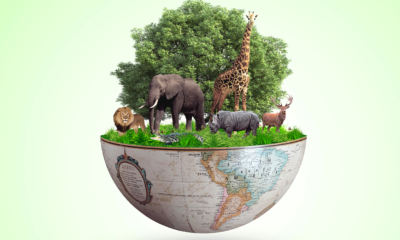
 News & Analysis3 years ago
News & Analysis3 years ago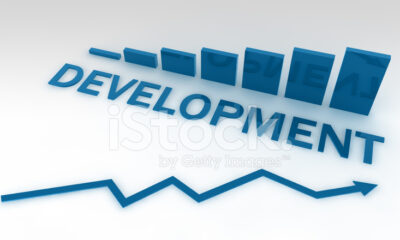
 News & Analysis3 years ago
News & Analysis3 years ago
 Lawyers2 years ago
Lawyers2 years ago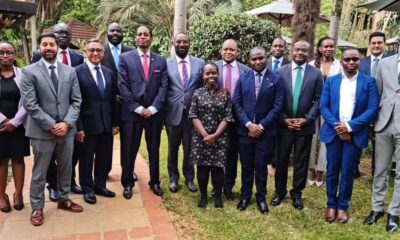
 News & Analysis3 years ago
News & Analysis3 years ago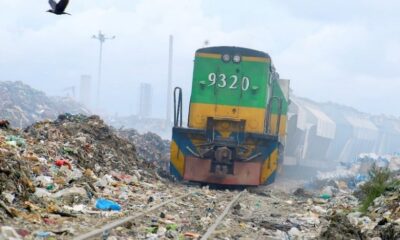
 News & Analysis1 year ago
News & Analysis1 year ago
 News & Analysis3 years ago
News & Analysis3 years ago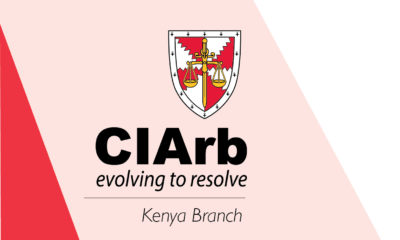
 News & Analysis1 year ago
News & Analysis1 year ago









